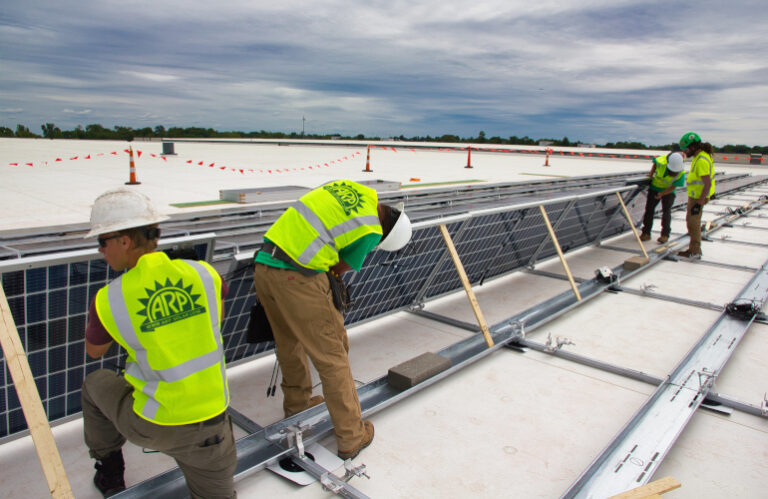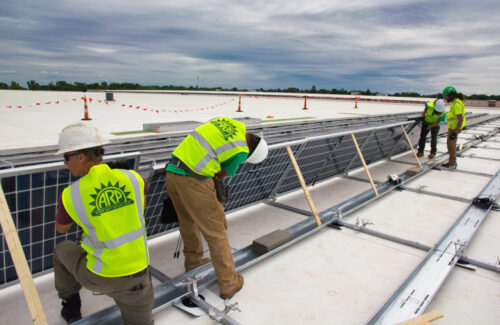The Biden administration Today reinstate imported bifacial solar panels under Sec. 201 tariffs, after the special solar panels enjoyed a two-year exemption from additional duties first initiated by President Biden in 2022.
This decision is part of the President’s exclusive right to make changes to current rates under Sec. 201 of the Trade Act of 1974, after the US International Trade Commission (USITC) submitted its interim report in February this year. All imported solar panels (regardless of country of origin) are currently subject to a 14.25% tariff as a way to protect domestic solar panel manufacturers from cheaper products from abroad. Bifacial panels were originally exempt from the tariffs because there was no significant domestic manufacturing capacity for the specialty product. This resulted in more bifacial modules being imported into the United States than monofacial panels, undermining the objectives of the original safeguard measure.
Data from Customs and Border Protection shows that 7.3 GW of double-sided panels and 10.1 GW of single-sided panels were imported in 2020. In the period January-June 2023, 12.4 GW of double-sided panels and 1.4 GW of single-sided panels were imported – an incredible turnaround. preferred, with bifacial modules accounting for 81.6% of the imported module share. There are reports that bifacial modules account for almost 98% of imports today.
Biden’s decision to reverse the bifaical exemption was likely influenced by: recent petition to the US Trade Representative by Hanwha Qcells and supported by fellow domestic manufacturers First Solar, Heliene, Suniva, Silfab, Crossroads Solar, Mission Solar and Auxin Solar. Manufacturers indicated that rising imports of bifacial panels were causing companies to reconsider their domestic production plans, an effort directed personally at President Biden and encouraged by incentives in the Inflation Reduction Act.
Timothy Brightbill, partner at Wiley Rein and trade advisor to the American Alliance for Solar Manufacturing, issued a statement World of solar energy after the interim report was submitted in February: “There have been numerous major announcements of new solar production capacity in the US as a result of the Inflation Reduction Act. It is imperative that we rebuild America’s solar supply chain and our leadership in this industry. However, all these new plans are now being undermined and at risk due to a global import surge and massive price cuts. According to most reports, prices have fallen by 50% or more and imports are at least double current demand, leading to stockpiling of solar panels in warehouses, where they will continue to suppress the market,” he said.
The Biden administration is offering light protection to two-faced importers. Those with pre-existing contracts for bifacial solar panels that are due for delivery within 90 days of today’s exclusion lifting can certify those contracts to continue taking advantage of the exclusion during that period.
In addition to bifacial panels losing their exemption, the Biden administration said it will increase the tariff quota (TRQ) for silicon solar cells by 7.5 GW if necessary. Currently, the first 5 GW of silicon solar cells imported each year are exempt from tariffs, but the Biden administration said it may now allow 12.5 GW through untariffed. US panel assemblers imported only 3.6 GW of solar cells in 2023, but imports increased in the first months of 2024.
Mike Carr, the Executive Director of the Solar Energy Manufacturers for America (SEMA) Coalition responded to today’s news:
“We commend the Biden Administration for closing the loophole in the 201 bipartisan waiver that opened under the previous administration. The protective measure was so weakened as to be largely irrelevant due to the bilateral exclusion. Removing the exemption will reintroduce a 15% tariff, providing important, but unfortunately still insufficient, relief from anti-competitive trade practices until the tariff expires in February 2026.”
Abigail Ross Hopper, president and CEO of the Solar Energy Industries Association (SEIA), released a statement:
“The Administration has taken another step to support U.S. solar panel manufacturers by passing Sec. 201 tariff quotas for cells, if necessary. This move provides an important bridge for module makers to access the supply they need as the United States continues to advance solar cell production. Today’s decision will help create a strong, stable module manufacturing sector that can support robust cell manufacturing in the long term.”



